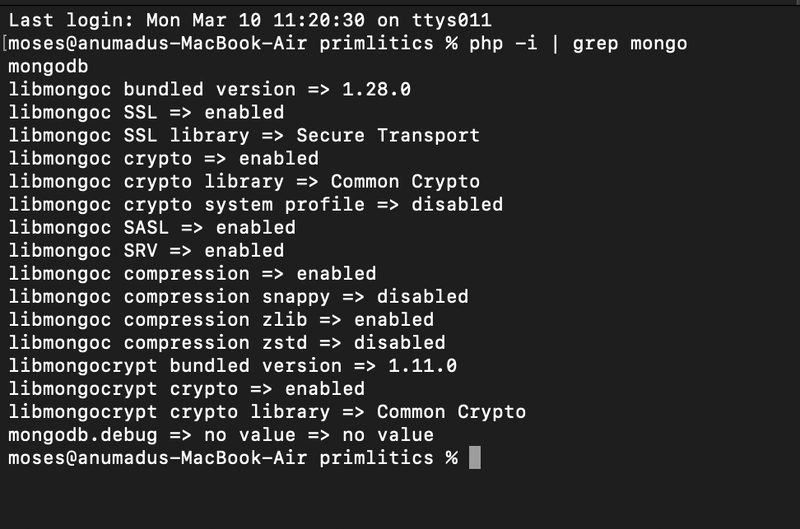Common Challenges of Financial Software Application Testing
Online banking has become one of the most popular trends in the current digital world. Therefore, it is important to test the corresponding applications because of the increasing reliance on financial and banking applications. The increasing popularity of these apps is proven by Gartner‘s forecast that the global financial management software market will reach $24.4 billion by 2026. To meet this demand without disappointing the users, you have to deliver well-tested and highly efficient apps. However, to test banking app you need to be extra careful and considerate as it involves many challenges and requires much more than just a basic functional check. Understanding these challenges prior to doing a test is better than facing them when you are halfway through the process or, worse still, when you have already completed it. Therefore, in this blog, we will uncover these challenges and the factors you need to consider when performing financial software testing. Things to Consider While Testing Financial Applications Before moving toward challenges, let’s discuss what you must consider before performing financial app testing in the right way. Here are five critical considerations: Impact Analysis: In impact analysis, the effects of changes in one part of the software on other parts are determined. This method involves selective retesting, reuse of relevant test cases, and a deeper check of some critical areas to minimize the impact of change on other features. Functional Testing: This testing guarantees that the software performs the expected tasks. It entails creating, checking and running the test cases, including system integration tests, regression tests and user acceptance tests. Security Testing: Financial software cannot afford to be vulnerable to breaches. Security testing, as the name suggests, is about the identification of security gaps, compliance checking with best practices, and protection of data on browsers and mobile applications. Performance Testing: It checks whether the application is capable of handling high traffic and ensures it works at the right speed under different conditions. Paying attention to end user experience monitoring can help you identify bottlenecks and ensure a smooth user journey. Compliance and Regulatory Testing: The financial industry is governed by many regulations as it deals with many sensitive data. You must conduct compliance testing to ensure the app meets all the requirements set by regulatory bodies for that specific region. If you don’t comply to those laws and regulations, you may have to face serious consequences. Test Automation: Automating tests helps increase the effectiveness of the testing process by doing it in a quicker and more precise manner. Automation can be applied to functional, security and performance testing for wider test coverage and more accurate results. Challenges in Financial Application Testing Now let’s discuss some of the most common challenges testers face while conducting financial application testing: 1. Security across the platforms Security testing is required to discover risks and ensure compliance with the security standards of the IT industry. Financial software usually processes very sensitive information and, therefore, becomes a favourite target for hackers. Moreover, the requirement to test these apps for security across different networks, operating systems, and devices adds up to the challenge. Conducting multi-layered security testing across all platforms can help you identify vulnerabilities and ensure compliance with regulations. 2. Managing Multiple Applications and Operating Systems Financial software must work on all types of devices and operating systems. The testing teams have to make sure that the user interface is the best and performance is not compromised by the device, network or operating system by conducting cross-platform and real-device testing. 3. The Management of Complex Financial Instruments Financial applications involve integrating many related services like payments, investments and asset purchasing. These systems need to be tested to ensure that internal processes and third-party tools do not interfere with each other and do not cause issues. 4. Ensuring Compliance with New Regulatory Norms There are some universal rules that are mandatory for fulfilling financial software requirements, including the laws related to data protection, AML, and KYC in the context of the respective region. Since these rules change often, testing strategies must be updated often to meet the requirements and avoid risks. 5. Frequent Technology Updates In today’s world of constantly changing technology, financial software needs to be updated along with changing frameworks, tools, and infrastructure. This means that there is always a need for functional and non-functional regression testing to avoid compatibility problems that may come with frequent upgrades. 6. Time Const

Online banking has become one of the most popular trends in the current digital world. Therefore, it is important to test the corresponding applications because of the increasing reliance on financial and banking applications. The increasing popularity of these apps is proven by Gartner‘s forecast that the global financial management software market will reach $24.4 billion by 2026.
To meet this demand without disappointing the users, you have to deliver well-tested and highly efficient apps. However, to test banking app you need to be extra careful and considerate as it involves many challenges and requires much more than just a basic functional check.
Understanding these challenges prior to doing a test is better than facing them when you are halfway through the process or, worse still, when you have already completed it.
Therefore, in this blog, we will uncover these challenges and the factors you need to consider when performing financial software testing.
Things to Consider While Testing Financial Applications
Before moving toward challenges, let’s discuss what you must consider before performing financial app testing in the right way. Here are five critical considerations:
Impact Analysis:
In impact analysis, the effects of changes in one part of the software on other parts are determined. This method involves selective retesting, reuse of relevant test cases, and a deeper check of some critical areas to minimize the impact of change on other features.
Functional Testing:
This testing guarantees that the software performs the expected tasks. It entails creating, checking and running the test cases, including system integration tests, regression tests and user acceptance tests.
Security Testing:
Financial software cannot afford to be vulnerable to breaches. Security testing, as the name suggests, is about the identification of security gaps, compliance checking with best practices, and protection of data on browsers and mobile applications.
Performance Testing:
It checks whether the application is capable of handling high traffic and ensures it works at the right speed under different conditions. Paying attention to end user experience monitoring can help you identify bottlenecks and ensure a smooth user journey.
Compliance and Regulatory Testing:
The financial industry is governed by many regulations as it deals with many sensitive data. You must conduct compliance testing to ensure the app meets all the requirements set by regulatory bodies for that specific region. If you don’t comply to those laws and regulations, you may have to face serious consequences.
Test Automation:
Automating tests helps increase the effectiveness of the testing process by doing it in a quicker and more precise manner. Automation can be applied to functional, security and performance testing for wider test coverage and more accurate results.
Challenges in Financial Application Testing
Now let’s discuss some of the most common challenges testers face while conducting financial application testing:
1. Security across the platforms
Security testing is required to discover risks and ensure compliance with the security standards of the IT industry. Financial software usually processes very sensitive information and, therefore, becomes a favourite target for hackers. Moreover, the requirement to test these apps for security across different networks, operating systems, and devices adds up to the challenge. Conducting multi-layered security testing across all platforms can help you identify vulnerabilities and ensure compliance with regulations.
2. Managing Multiple Applications and Operating Systems
Financial software must work on all types of devices and operating systems. The testing teams have to make sure that the user interface is the best and performance is not compromised by the device, network or operating system by conducting cross-platform and real-device testing.
3. The Management of Complex Financial Instruments
Financial applications involve integrating many related services like payments, investments and asset purchasing. These systems need to be tested to ensure that internal processes and third-party tools do not interfere with each other and do not cause issues.
4. Ensuring Compliance with New Regulatory Norms
There are some universal rules that are mandatory for fulfilling financial software requirements, including the laws related to data protection, AML, and KYC in the context of the respective region. Since these rules change often, testing strategies must be updated often to meet the requirements and avoid risks.
5. Frequent Technology Updates
In today’s world of constantly changing technology, financial software needs to be updated along with changing frameworks, tools, and infrastructure. This means that there is always a need for functional and non-functional regression testing to avoid compatibility problems that may come with frequent upgrades.
6. Time Constraints for Testing
Many financial organizations are pressured to quickly release new features to the market in order to compete. To achieve this, the duration of the testing phase can be very short, which may compromise the effectiveness of the whole process, and users may lose trust in the platform. Automating tests that need to be frequently repeated can help speed up the testing cycles and meet the deadline with minimum errors.
7. Data Migration Challenges
System upgrades or migrations include the moving of sensitive financial data, which makes this process complex and prone to errors. In this case, rigorous data migration and regression testing are critical to transferring data without any discrepancies, making the process challenging.
8. Testing Real-Time Transactions
Financial applications usually deal in real-time transactions where factors such as speed, accuracy and reliability are very important. One of the biggest difficulties is to guarantee that all the transactions are executed immediately and without mistakes. Performing rigorous load testing, stress testing and constant observation ensures your software can perform real-time transactions even during the heaviest loads.
Conclusion
Analyzing financial software applications requires a lot of effort, accuracy, and knowledge, as well as an active approach to the problem. From security issues to performance and compliance issues, resolving them all is very important. Therefore, when a business embarks on functional, security, and performance testing, among others, its applications are shielded against such risks and users’ confidence is built. Enrolling in a financial analysis course can further enhance one’s ability to assess these applications effectively, ensuring they meet industry standards.
Source: This blog was originally published at bostoninstituteofanalytics.org









































































































































































![[The AI Show Episode 142]: ChatGPT’s New Image Generator, Studio Ghibli Craze and Backlash, Gemini 2.5, OpenAI Academy, 4o Updates, Vibe Marketing & xAI Acquires X](https://www.marketingaiinstitute.com/hubfs/ep%20142%20cover.png)


























































































































![[FREE EBOOKS] The Kubernetes Bible, The Ultimate Linux Shell Scripting Guide & Four More Best Selling Titles](https://www.javacodegeeks.com/wp-content/uploads/2012/12/jcg-logo.jpg)



![From drop-out to software architect with Jason Lengstorf [Podcast #167]](https://cdn.hashnode.com/res/hashnode/image/upload/v1743796461357/f3d19cd7-e6f5-4d7c-8bfc-eb974bc8da68.png?#)







































































































.png?#)




.jpg?#)




















 (1).webp?#)











_Christophe_Coat_Alamy.jpg?#)








































































































![Rapidus in Talks With Apple as It Accelerates Toward 2nm Chip Production [Report]](https://www.iclarified.com/images/news/96937/96937/96937-640.jpg)








































































































































